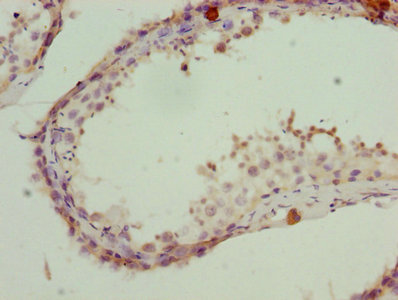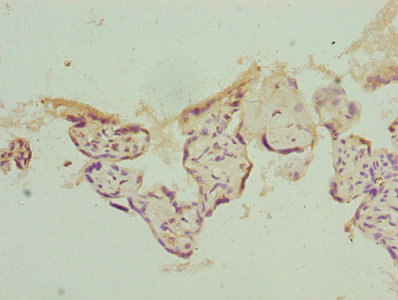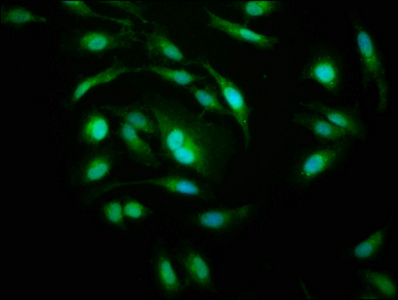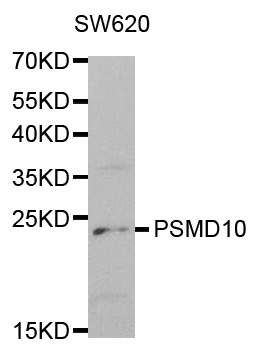
Immunohistochemistry of paraffin-embedded human testis tissue using CSB-PA018899LA01HU at dilution of 1:100
PSMD10 Antibody
CSB-PA018899LA01HU
ApplicationsImmunoFluorescence, ELISA, ImmunoHistoChemistry
Product group Antibodies
ReactivityHuman
TargetPSMD10
Overview
- SupplierCusabio
- Product NamePSMD10 Antibody
- Delivery Days Customer20
- ApplicationsImmunoFluorescence, ELISA, ImmunoHistoChemistry
- CertificationResearch Use Only
- ClonalityPolyclonal
- ConjugateUnconjugated
- Gene ID5716
- Target namePSMD10
- Target descriptionproteasome 26S subunit, non-ATPase 10
- Target synonymsdJ889N15.2, p28, p28(GANK), 26S proteasome non-ATPase regulatory subunit 10, 26S proteasome regulatory subunit p28, ankyrin repeat protein, gankyrin, hepatocellular carcinoma-associated protein p28-II, proteasome (prosome, macropain) 26S subunit, non-ATPase, 10
- HostRabbit
- IsotypeIgG
- Protein IDO75832
- Protein Name26S proteasome non-ATPase regulatory subunit 10
- Scientific DescriptionActs as a chaperone during the assembly of the 26S proteasome, specifically of the PA700/19S regulatory complex (RC). In the initial step of the base subcomplex assembly is part of an intermediate PSMD10:PSMC4:PSMC5:PAAF1 module which probably assembles with a PSMD5:PSMC2:PSMC1:PSMD2 module. Independently of the proteasome, regulates EGF-induced AKT activation through inhibition of the RHOA/ROCK/PTEN pahway, leading to prolonged AKT activation. Plays an important role in RAS-induced tumorigenesis. Acts as an proto-oncoprotein by being involved in negative regulation of tumor suppressors RB1 and p53/TP53. Overexpression is leading to phosphorylation of RB1 and proteasomal degradation of RB1. Regulates CDK4-mediated phosphorylation of RB1 by competing with CDKN2A for binding with CDK4. Facilitates binding of MDM2 to p53/TP53 and the mono- and polyubiquitination of p53/TP53 by MDM2 suggesting a function in targeting the TP53:MDM2 complex to the 26S proteasome. Involved in p53-independent apoptosis. Involved in regulation of NF-kappa-B by retaining it in the cytoplasm. Binds to the NF-kappa-B component RELA and accelerates its XPO1/CRM1-mediated nuclear export.
- ReactivityHuman
- Storage Instruction-20°C or -80°C
- UNSPSC41116161





